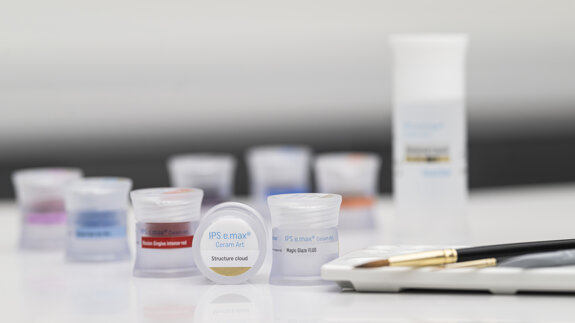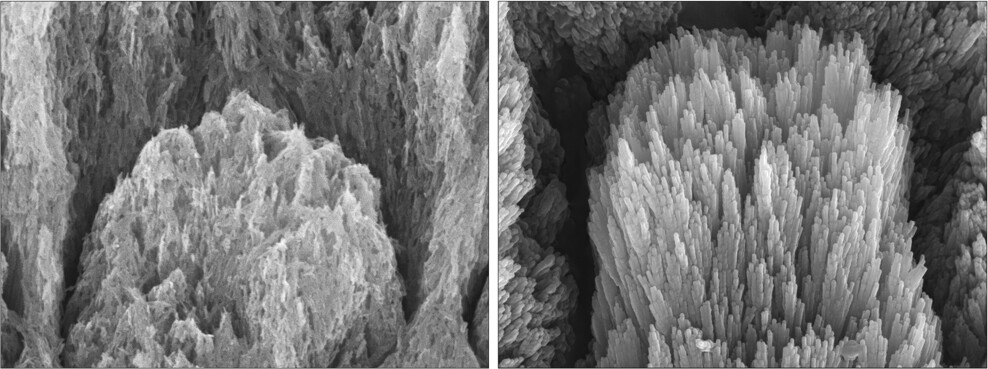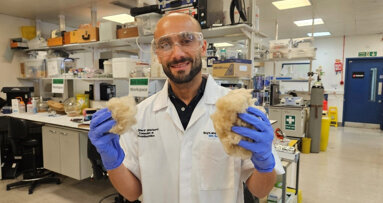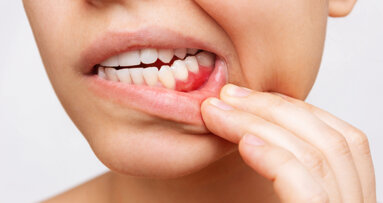The burgeoning field of biomaterials in dentistry has been reported on by Dental Tribune International, including both the development of a toothpaste derived from keratin found in human hair and the use of plant-derived compounds to combat periodontal issues. As part of this broad trend in dentistry, a research team from the University of Nottingham, working alongside international partners, has developed a protein-based gel designed to restore damaged tooth enamel—a considerable advancement in dental science. This innovation sits within a growing field of biomaterials research aimed at improving long-term oral health by working with the body’s natural processes, rather than simply filling or covering areas of damage.
The newly developed gel works by imitating the natural proteins responsible for enamel formation during early development. When applied to a tooth, the gel forms a protective and structurally supportive layer that integrates with the existing enamel surface. This layer then draws in calcium and phosphate ions from saliva, guiding them to form new hydroxyapatite crystals in an organised pattern. The result is the gradual rebuilding of enamel in a way that mirrors the original tissue, both in appearance and functional strength.
Unlike standard fluoride treatments, which aim primarily to strengthen the remaining enamel or slow caries, this gel facilitates controlled regrowth on a microscopic level. Early testing has demonstrated that the restored areas behave similarly to natural enamel under everyday conditions such as chewing, brushing and exposure to acidic foods.
Additionally, the gel shows potential benefits for exposed dentine. By forming an enamel-like layer over dentine, the gel may reduce discomfort and improve the longevity of restorations.
Speaking in a university press release, senior author Dr Alvaro Mata, professor of biomedical engineering and biomaterials at the university, said: “We are very excited because the technology has been designed with the clinician and patient in mind. It is safe and can be easily and rapidly applied, and it is scalable. Also, the technology is versatile, which opens the opportunity to be translated into multiple types of products to help patients of all ages suffering from a variety of dental problems associated with loss of enamel and exposed dentine.”
To advance the technology towards clinical application, the research team has founded a startup company that aims to develop a range of user-friendly dental products. The hope is that the first versions may become available commercially in the near future. If successful, this biomaterial-based approach could significantly reduce the need for invasive tooth preparation, synthetic restorative materials and recurrent restoration, marking a notable step forward for regenerative dentistry.
The study, titled “Biomimetic supramolecular protein matrix restores structure and properties of human dental enamel”, was published online on 4 November 2025 in Nature Communications.



 Austria / Österreich
Austria / Österreich
 Bosnia and Herzegovina / Босна и Херцеговина
Bosnia and Herzegovina / Босна и Херцеговина
 Bulgaria / България
Bulgaria / България
 Croatia / Hrvatska
Croatia / Hrvatska
 Czech Republic & Slovakia / Česká republika & Slovensko
Czech Republic & Slovakia / Česká republika & Slovensko
 France / France
France / France
 Germany / Deutschland
Germany / Deutschland
 Greece / ΕΛΛΑΔΑ
Greece / ΕΛΛΑΔΑ
 Hungary / Hungary
Hungary / Hungary
 Italy / Italia
Italy / Italia
 Netherlands / Nederland
Netherlands / Nederland
 Nordic / Nordic
Nordic / Nordic
 Poland / Polska
Poland / Polska
 Portugal / Portugal
Portugal / Portugal
 Romania & Moldova / România & Moldova
Romania & Moldova / România & Moldova
 Slovenia / Slovenija
Slovenia / Slovenija
 Serbia & Montenegro / Србија и Црна Гора
Serbia & Montenegro / Србија и Црна Гора
 Spain / España
Spain / España
 Switzerland / Schweiz
Switzerland / Schweiz
 Turkey / Türkiye
Turkey / Türkiye
 UK & Ireland / UK & Ireland
UK & Ireland / UK & Ireland
 Brazil / Brasil
Brazil / Brasil
 Canada / Canada
Canada / Canada
 Latin America / Latinoamérica
Latin America / Latinoamérica
 USA / USA
USA / USA
 China / 中国
China / 中国
 India / भारत गणराज्य
India / भारत गणराज्य
 Pakistan / Pākistān
Pakistan / Pākistān
 Vietnam / Việt Nam
Vietnam / Việt Nam
 ASEAN / ASEAN
ASEAN / ASEAN
 Israel / מְדִינַת יִשְׂרָאֵל
Israel / מְדִינַת יִשְׂרָאֵל
 Algeria, Morocco & Tunisia / الجزائر والمغرب وتونس
Algeria, Morocco & Tunisia / الجزائر والمغرب وتونس
 Middle East / Middle East
Middle East / Middle East











































To post a reply please login or register